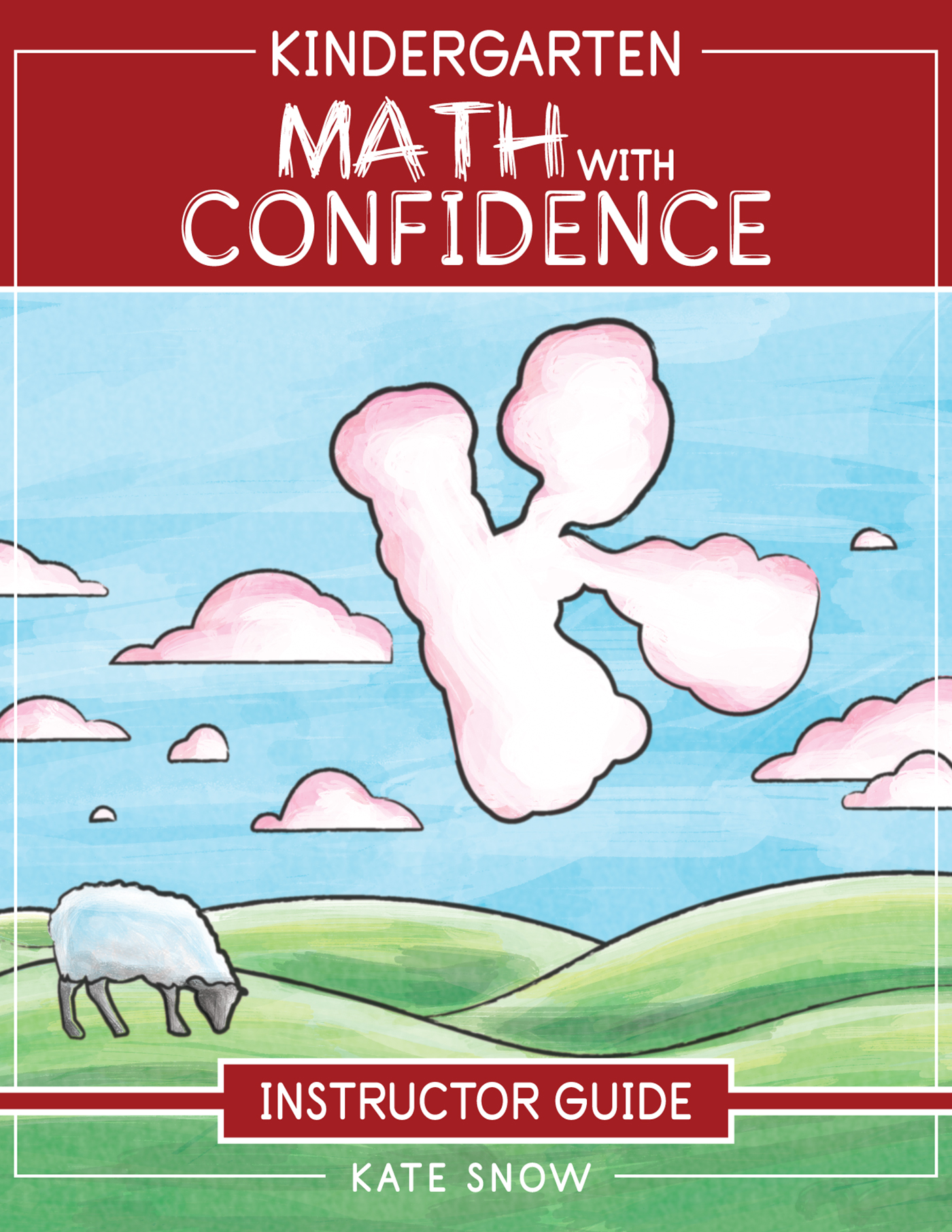Table of Contents
Guide
Page List
Kindergarten Math with Confidence
Instructor Guide
KATE SNOW
WELL-TRAINED MIND PRESS
Table of Contents
Welcome to Kindergarten Math with Confidence!
Kindergarten Math with Confidence is a complete kindergarten math curriculum that will give your child a solid foundation in math. Its playful, hands-on, and fun with thorough coverage of all the skills your child needs to become capable and confident at math:
reading, writing, and comparing numbers
beginning addition and subtraction
shapes, patterns, and directions
counting to 100
money, time, and measurement
The carefully-sequenced and confidence-building lessons will help your child develop a strong understanding of math, step by step. Daily review will ensure she fully masters what she has learned in previous lessons. With this blend of deep conceptual understanding and traditional skill practice, your child will be well-prepared for first grade.
Parents who pilot-tested this book describe the lessons as fun, relationship-building, and even joyful! Your child will develop both strong number sense and a positive attitude toward math with activities like Subtraction War, Number Relay, and Pretend Store. Youll need just basic household items (like coins, objects to count, and a clock) to make math come alive for your child.
Kindergarten Math with Confidence also includes a colorful, engaging workbook to reinforce what your child has learned. (If your childs fine-motor skills are still developing, its fine for you to scribe her answers in the workbook.) Youll also find weekly suggestions for delightful math picture books, as well as ways to incorporate what your child is learning into your everyday activities.
If youre like most parents, youve probably never taught math before. You may even feel a little anxious. But dont worry: if you can add 5 + 3 and count to 100, I promise youll be fine! Kindergarten Math with Confidence is full of features that will help you teach math with confidence all year long:
Scripted, open-and-go lessons that guide you every step of the way
Clear goals at the beginning of each lesson so that you know exactly what youre trying to accomplish
Explanatory notes that help you understand more deeply how children learn math so that you feel well-equipped to teach your child
Checkpoints at the end of each unit that give you specific guidance on whether to spend more time on the current unit or move on to the next one
In the next section, youll learn how the curriculum is organized and how to get your materials ready. Invest a little time reading this section right now (and getting your Math Kit ready), and youll be ready to teach math like a pro all year long.
Wishing you a joyful year of kindergarten math!
Kate Snow
Is My Child Ready to Start Kindergarten Math with Confidence?
Most children will be ready to start Kindergarten Math with Confidence when they are 5 or 6 years old. Your child does not need to have used a formal preschool math program before starting, although its helpful if she has already learned to count to 10 and hold a pencil.
If your child is ever frustrated, resisting math lessons, or crying during math time, its a clear sign that you should take a break from the current topic, do some easy review, and then try again in a few weeks. If your child shows these signs frequently, it likely means that this book is too challenging for her current maturity level, no matter how old she is. Every childs brain matures at a different rate, and you and your child will both find your math lessons much more satisfying when your child is developmentally ready to begin.
Using this book with a younger child
A few 4-year-olds may be ready to use Kindergarten Math with Confidence, but most young children wont be ready for the number-writing on the worksheets or the more abstract concepts in the program (such as categorizing shapes or writing two-digit numbers). If your younger child is interested in numbers, you can use Preschool Math at Home before starting this program. Then, monitor his level of engagement and frustration to decide whether or not he is mature enough for kindergarten math.
Using this book after Preschool Math at Home
If you used Preschool Math at Home (or another preschool math program), you might find that the because your child is already familiar with many of the concepts.
Overview
Kindergarten Math with Confidence is organized into units, weeks, and lessons with clear goals for each section so that you know exactly what youre trying to accomplish. At the end of the book, youll also find an appendix of helpful resources, including the full scope and sequence, a list of recommended picture books, list of materials needed, and Blackline Masters.
Units
Kindergarten Math with Confidence is divided into 10 units. Each unit focuses on one core topic, such as shapes, addition, or counting to 100.
Sample Unit Overview
Weeks
Each unit is divided into 25 weeks, for a total of 32 weeks. Each week has a specific focus, such as putting numbers in order from least to greatest or understanding the concept of addition.
Although these groups of lessons are called weeks, that doesnt mean you have to finish each one in a calendar weekits fine to have your week begin on Wednesday and end on the following Friday.
Sample Week Preview
The preview for each week includes the following:
Overview. A quick summary of what youll teach your child that week, along with a list of the lessons.
Teaching Math with Confidence. These notes will help you understand more deeply how children learn math so that youre well-prepared and confident as you teach your child the new concepts.
Household Materials Needed for the Week. Youll sometimes need to supplement your regular math materials with a few everyday household items, such as stuffed animals, crayons, or plastic cups. This section will give you a heads-up if you need any extra materials for the week. (See below for more information on materials.)
Weaving Math Into Everyday Life. These simple math applications will help you incorporate what your child is learning in math into everyday activities like eating a snack, going to the park, or running errands.
Math Book of the Week. These math picture book recommendations align with what your child learns each week.
Note that Weaving Math into Everyday Life and the Math Book of the Week are completely optional. You do not need to hunt down every picture book or do every activity.
Lessons
Each week includes four lessons, which should be plenty for most kindergartners. It also gives your family a little extra room in the calendar for chores, errands, or appointments. (See below for options if you prefer to teach math 5 days per week.)


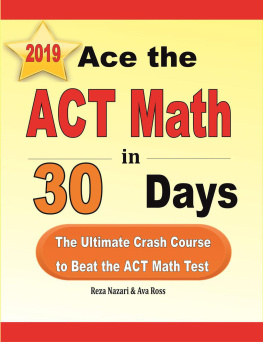
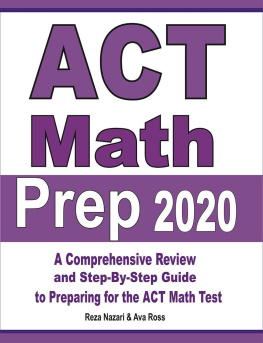
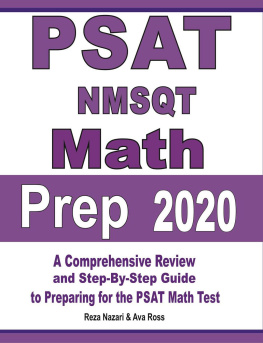
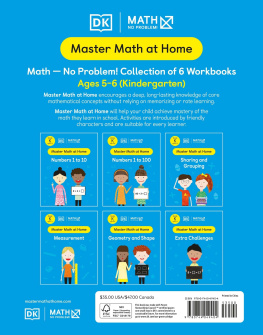
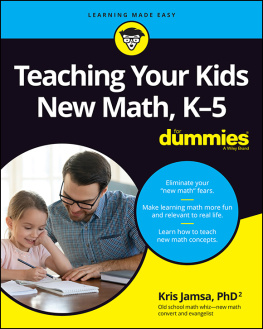
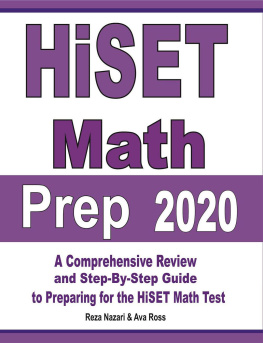

![Mary Hansen [Mary Hansen] - Master Math: Business and Personal Finance Math](/uploads/posts/book/119081/thumbs/mary-hansen-mary-hansen-master-math-business.jpg)

